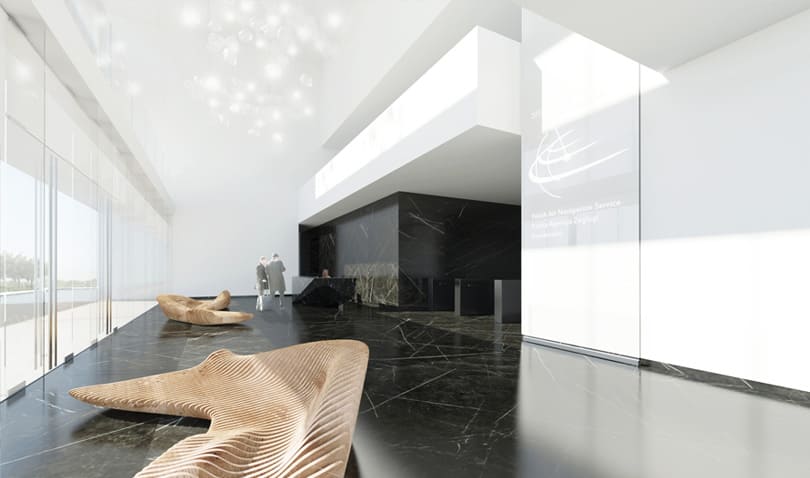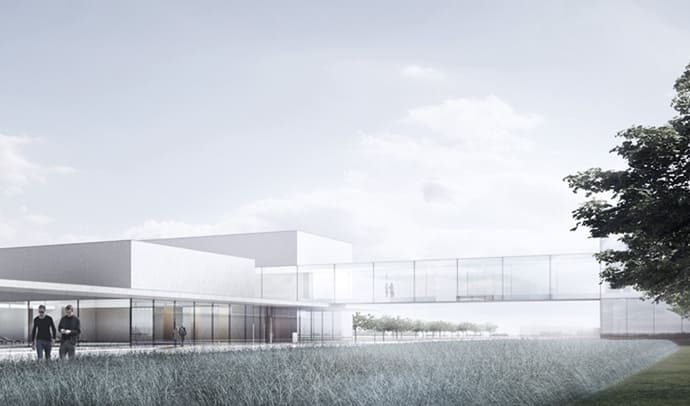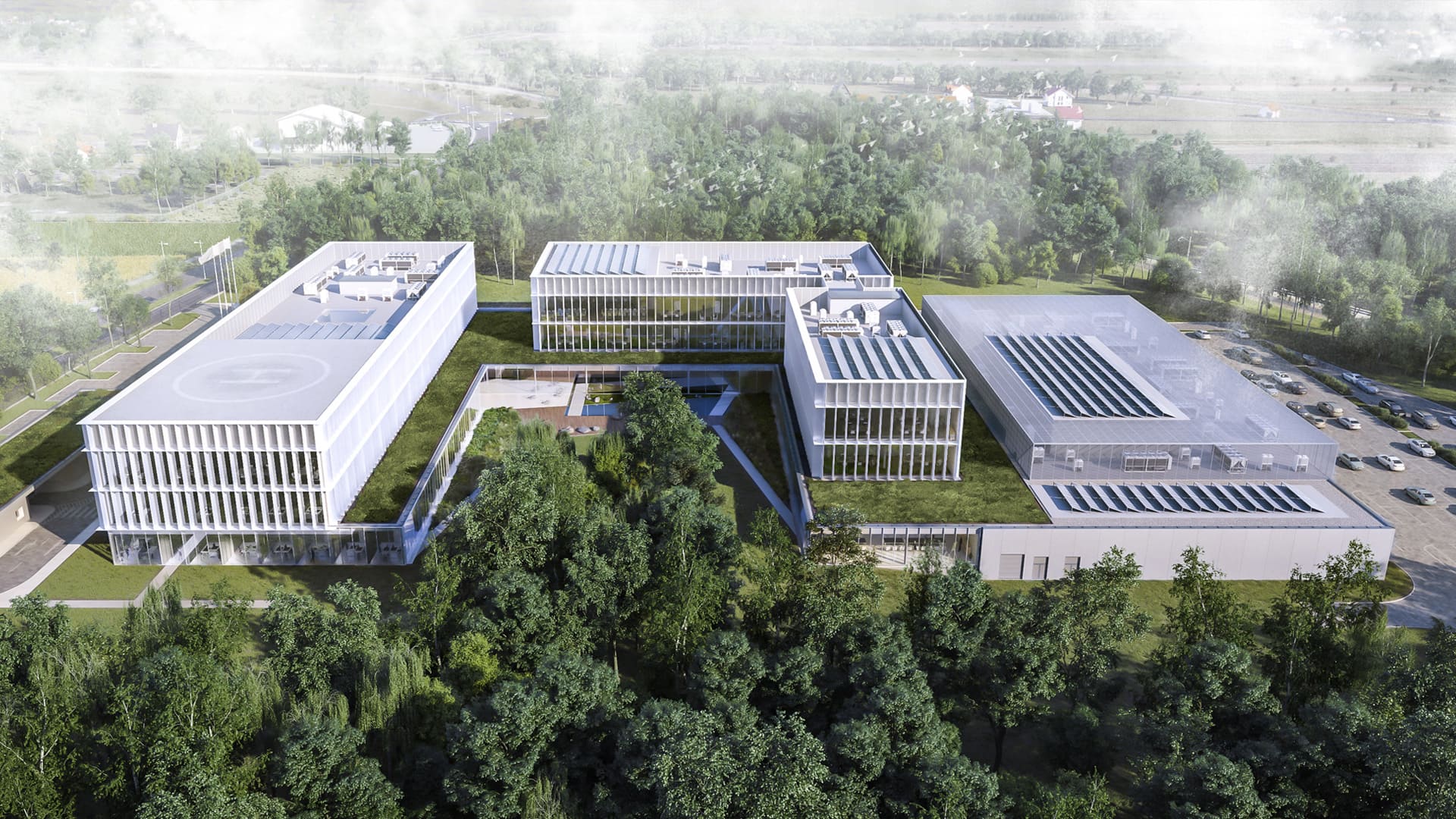Polish air traffic controllers take care of safety of passengers all over Poland. They need to be extra resilient, since they work under pressure 7.5 hours a day with two breaks to rest. The DEDECO Project was to develop a landscape Campus with a system of links between particular buildings, common space, atria, courtyards, sidewalks and passages, which are used for specialists to rest, interact and restore their stamina. The idea was to organize their work and relaxation in the Campus to facilitate traffic controllers, secure possibly the best working conditions for such a demanding and stressful job, and at the same time provide the best conditions for regeneration – in other works to enhance safety of air traffic in Poland.
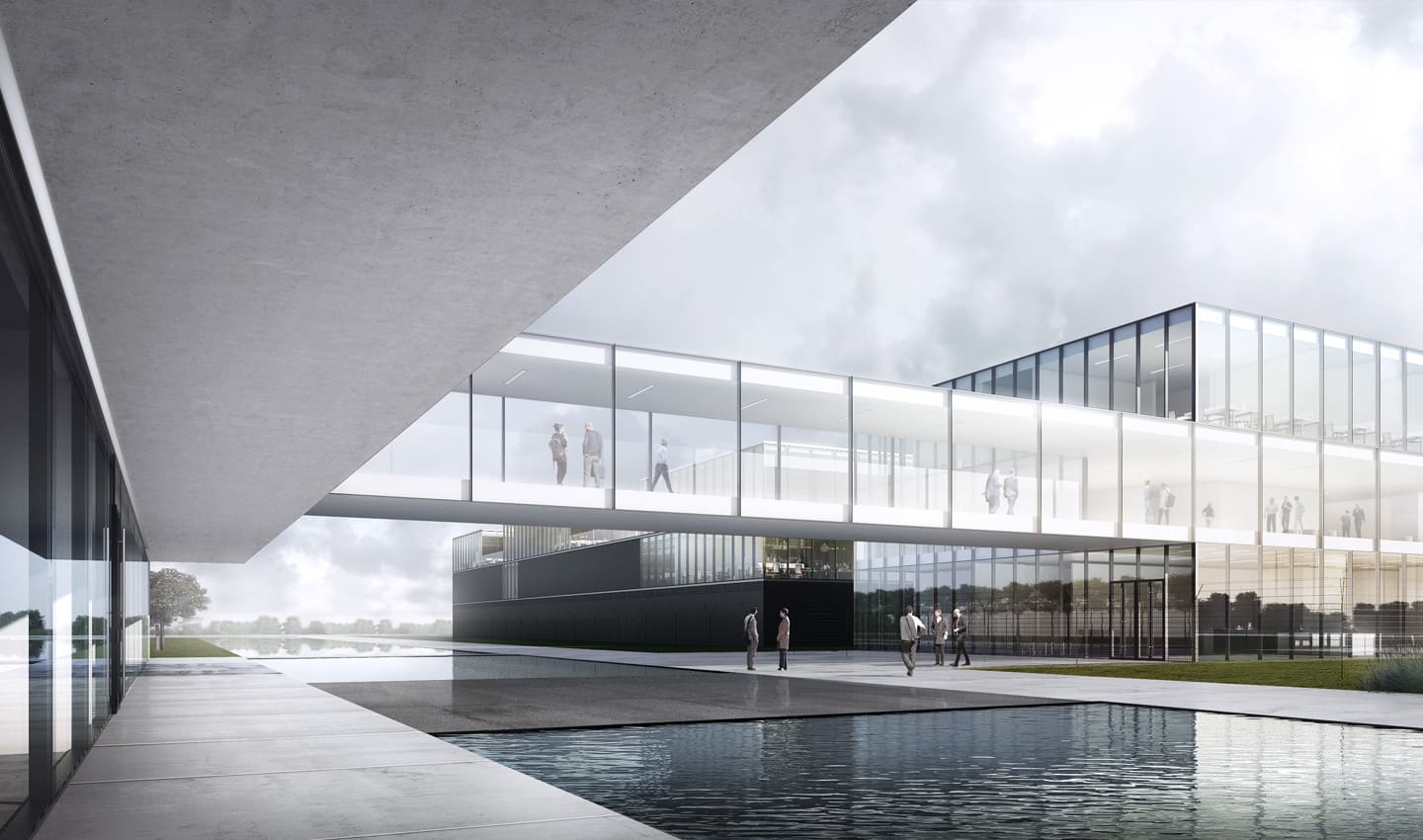
Urban arrangement is crucial
Contrary to the name of the architectural and urban planning competition, we considered that the urban part would play the fundamental role. It was not the architecture of particular buildings that will create the main value of the project but the careful development of space between buildings planned. High quality of architecture goes beyond any question, but even the most beautiful buildings alone will not contribute to the quality of public space. Top quality public space can be ensured by a good urban plan: clear, memorable, not complicated, and diverse in terms of intensity and diversity.
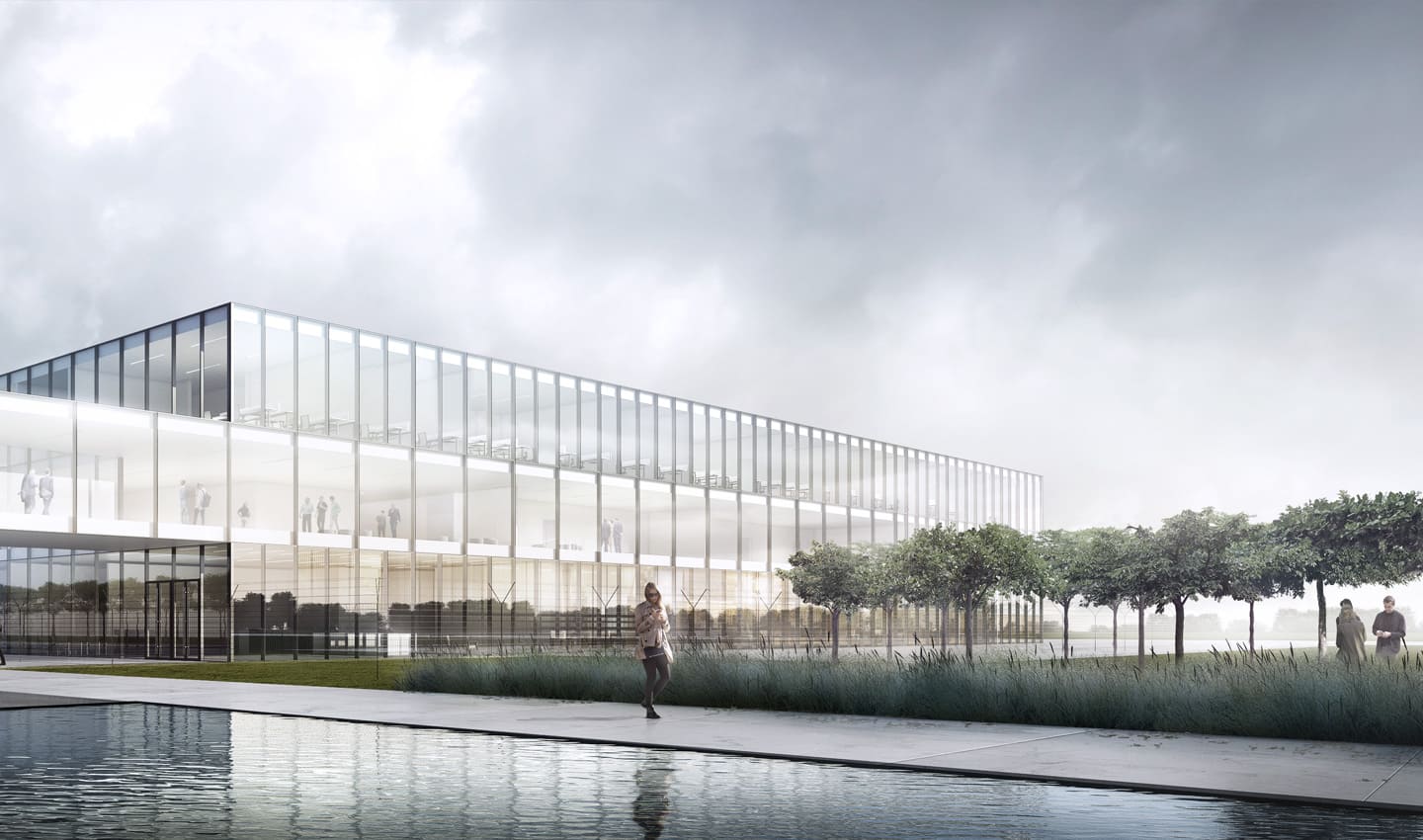
The project includes linear facilities, such as pedestrian passages commanding a distant view highlighted with a field of water. There is also an elaborate recreation centre, consisting of buildings of various size, spaced with natural courtyards, atria and passages. The office building, the headquarters of the agency, includes two main inner yards and small cosy terraces on top of roofs. The same solution has been introduced in the operating centre which in principle is closed and hermeneutic. Other buildings add to the composition. They are necessary together with diverse free space between them. It includes open space, cosy interiors, and linear arrangements. This provides much air, space and distance, which merge with areas designated for the interaction between employees.

The Campus is more than a town. It is the environment of work, pursuit of life passions, leisure and integration of users. It is the catalyser of their aspirations.
This is what we call the Campus in the project description, while referring to such an ideal space containing various functions and dimensions of buildings, where pedestrians enjoy priority treatment, and cars are forgotten and need to stay away of the urban and architectural arrangement. The Campus does not consist of a group of separate buildings with loose functional links – as it may take place in an open cluster of facilities.
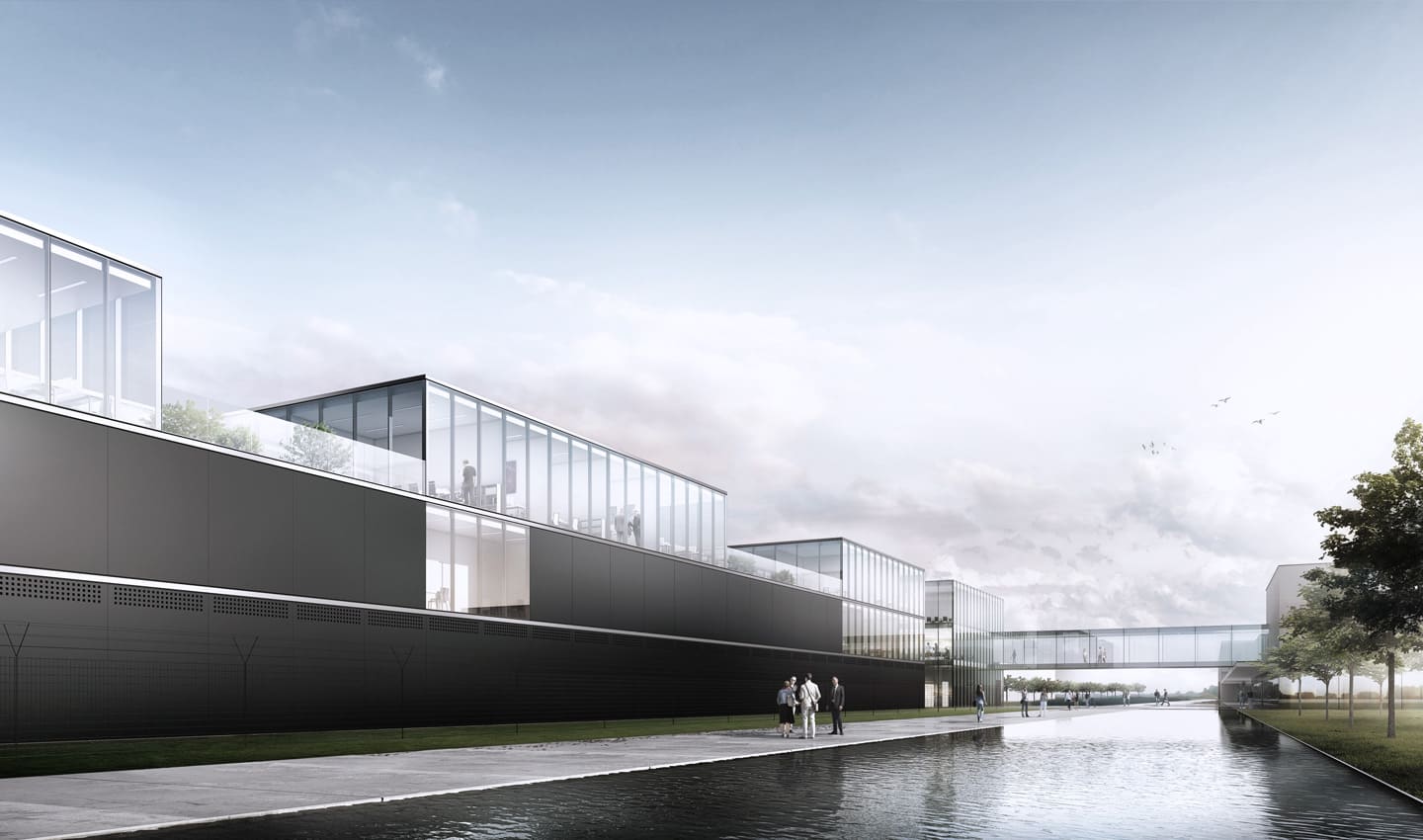
We believe in the power of attraction resting in beautiful locations, carefully designed up to the level of urban references to architectural details.

While taking into consideration the context of the surrounding, the Campus brings in a new form of life. In this context, designers strived to create new space for the close-knit community, with a specific hierarchy, and a group of specialists at the same time. Therefore, we had to put the creation of new, novelty spatial relations in the first place. We gave a precise response to requests of the Client as well as his technical, functional and social demands that stem from well-defined technological relations.
